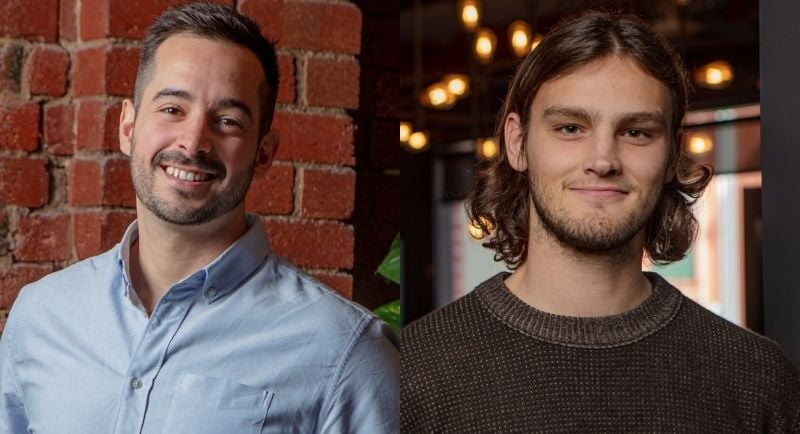‘It is our duty as agencies to continue to understand what audiences are doing, and this is a great way to use it to understand and also put it into action.’
“Don’t put all your eggs on attention,” Atomic 212°’s Chief Strategy Officer, Asier Carazo, told Mediaweek about the main learning from the Publicis Groupe agency’s new report, Deeper Than Attention.
The report examined ad receptivity, or how open audiences are to engaging with advertising initially, and showcased the impact of shifting from traditional attention metrics to a nuanced understanding of consumer attitudes using the agency’s market research platform, Sonar.
“Human behaviour should be at the core of everything we do as media and creative agencies, so why don’t we look a little bit more into that and try to understand what happens when people are consuming advertising.”
Strategy Director Sam Bessell explained that while attention research is new to the industry and Atomic 212° saw the gap in doing research in the space.
Carazo added that this research uncovers an “uncomfortable truth” about the industry’s work- “people are hard to reach, and people do things to avoid seeing that.”
He said that despite the number of campaigns that are out in the market, audiences don’t see them.
“Real consumers might not even see the ads because they are doing a series of behaviours to avoid seeing those ads, and I think it’s very important that now we have a data point that understands what people are doing in each channel and to what extent.
“It’s not a nice thing for a lot of agencies to talk about people avoiding what we do, but I think we have to talk about it because people pay a ridiculous amount of money monthly for subscriptions to just avoid seeing the work.
“The better you have an understanding of human behaviour, the more effective your advertising will be.”
Atomic 212° on understanding the ad journey
Among the findings, which surveyed 1,500 Australians aged 18 and over in May 2025, the report identified that some platforms typically dismissed as “low attention” environments actually outperform on receptivity, offering untapped value for advertisers.
Cinema and Out Of Home are “low attention” channels that performed well in ad receptivity and attention because both environments were physical formats that are hard to avoid.
Carazo noted that the findings help paint the picture of the life of an ad and to maximise its chances of being in the mind of a consumer.
Atomic 212’s research also segmented Australian audiences into four distinct behavioural types based on how they avoid ads, content controllers – using skip ads feature on platforms, space evaders – physically avoid ads by leaving the room or turning away, focus shifters – stay present but shift attention elsewhere, and ad-free subscribers – pay to avoid ads entirely.
Bessell said these categories were important in understanding where the audience is stepping off in the ad journey and how improvements can be made.
“If it’s proactive, media is really important in the planning, but if it’s reactive, creative becomes really important. This is the bridge from ad receptivity to the current attention metrics in place. Reactive behaviour needs creativity to maintain that engagement.”
Helping Atomic 212° clients hit targets
A wide range of Atomic 212 clients have used Sonar to improve their strategy. Carazo said the feedback has been positive because it puts the research in their hands.
“The reports they get from us are way shorter than a report that you would get from a big research company. They go straight to the point, have a clear recommendation, and we also manage the media investment.”
He highlighted BMW, a long-standing client of Atomic, as a brand that has benefitted from Sonar for the past few years.
“Sonar has informed everything they do from a media, marketing perspective, even to the point that we were able to prove constant demand in vehicles within different segments, so they moved away from communicating launches and then being more always-on.”
Sonar helped Tourism NT shift from attracting tourists in the 50+ age demo via TV to reaching them on YouTube and TikTok.
Carazo said it helps effectively “break cliches and pre-assumptions that we had on the audience and using the power of data to make those recommendations.”
Bessell also noted that O’Brien has had success with Sonar in widening their market beyond decision makers with their cars.
“We’ve demonstrated that they were such a market leader that they needed to keep looking beyond their current target audience.”
Making ad receptivity standard
Carazo believes that ad receptivity should become a standard input as it provides better insights into human behaviour and improves how it is planned.
“For us, it is definitely going to be a standard. For others, they want to conduct their own research; if they want to tap into Sonar, they absolutely can.
“It is our duty as agencies to continue to understand what audiences are doing, and this is a great way to use it to understand and also put it into action.”
Bessell added: “We still feel that this is the attention economy and discussion is still growing, and we believe is an emerging area of study that should be taken seriously.
“We really want to implement this and recommend anyone else in that everyone else in the industry do the same.”
The future of consumer behaviour and dynamics
Carazo said he hopes to see conversations build with clients who want to access Sonar and build their audiences to discover the type of ad receptors and levels of ad receptivity across their existing audiences.
He also noted that they are having conversations with creative agencies, including Publicis Groupe’s Leo and Saatchi&Saatchi.
“We want them to benefit from this; media and creative always have to work together. This is an extra opportunity to build a bridge between media and creative, and design that connected platform.
“I think this is right at the centre of the ethos of Publicis’ Power of One. I want to make sure that everything we do is useful for creative agencies.”
He noted that some Sonar whose creative agencies are not part of the Group also use the dashboard and see the data in real time.
“This has been a game changer, but also for marketers in empowering them and giving them something new they can learn from that they feel that they have the right partner because we are asking the right questions. We’re quite proactive, ahead of our time in understanding consumer behaviour and dynamics.
Bessell added, “This research gives us and marketers an added level of understanding about attention that they otherwise wouldn’t have had, and we want to make this available to our clients.
“We’re really excited to make this a bigger part of our discussions with them in our planning, and we hope the industry starts to acknowledge perhaps something that they were unwilling to do for such a long time.”
Top image: Asier Carazo and Sam Bessell
Keep on top of the most important media, marketing, and agency news each day with the Mediaweek Morning Report – delivered for free every morning to your inbox.
Related Items:Asier Carazo, Atomic 212°, Sam Bessell


